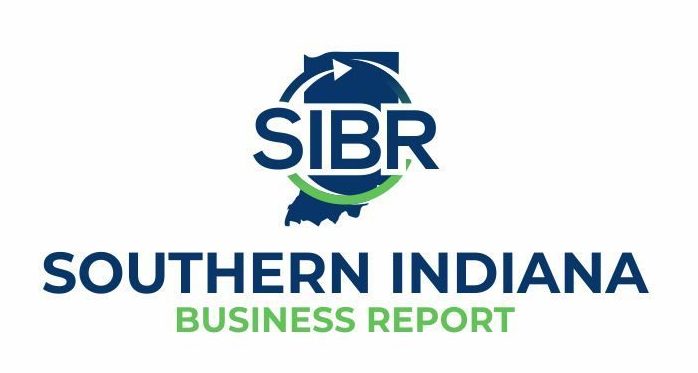Josh Malancuk, JM Tax Advocates
For a wide variety of reasons, U.S. businesses are facing an unprecedented shortage of workers, and that has a profound impact on where we choose to locate our businesses, how we price our products and services, how we recruit, train and retain workers while trying to stay competitive globally and against neighboring states.
A recent RSM survey of 460 middle market companies found that 94% of US companies are struggling to find the people they need and two thirds (68%) are struggling to attract experienced talent. For example, economists projected 500,000 new jobs in September 2021, but just 194,000 were filled — colossal disappointment.
According to the U.S. Bureau of Labor Statistics, the average U.S. manufacturing worker earns almost $27 per hour – more than four times the federal minimum wage and well over $50,000 per year, plus benefits. Yet, the U.S. manufacturing industry faced a major setback after losing roughly 1.4 million jobs at the onset of the pandemic, according to National Association of Manufacturers (NAM) data.
Since then, the industry has struggled to fill job vacancies. As of March 2023, NAM said there were 693,000 open manufacturing jobs. The shortage of workers is even more pronounced here in the upper Midwest where manufacturing is the backbone of the economy. The driving factor is a massive labor shortage as millions of Americans are now opting to stay home rather than return to work. More on that in a minute.
So, what happened to all the workers? Not only are 10,000 boomers reaching retirement age every day, according to U.S. Census data, but exceptionally generous government welfare programs introduced during COVID, combined with record high costs of childcare, eldercare, and vehicles, has made staying at home more economically feasible for millions of Americans than returning to the workforce.
Lingering effects of pandemic has slowed hiring in many areas
Many working-age adults have been slow to reenter the workforce because of lingering factors driven by the pandemic (fear of getting infected, vaccination mandates, the need to take care of young children during school closures/remote learning, or elder care). The pandemic also drove many boomers from the labor force, reversing a 25-year trend of rising participation among mature workers. This further reduced the labor supply. Unlike the global financial crisis of 2008 – 2009, stock and home prices rose sharply during the pandemic, giving older workers a bigger financial cushion for retirement.
The welfare state is disincentivizing workers to fill open job positions
According to The Foundation for Government Accountability (GAO), an unemployed parent of two kids who previously worked at a low-income job could collect more than $3,700 per month — nearly $45,000 per year — in government benefits. That’s more than the yearly wage for the average U.S. job.
In some states, the situation is even more extreme. For example, in Arizona, the same parent would collect government benefits that are 75 percent more than a minimum-wage job pays, and even more than the average worker earns ($3,687 vs. $3,354). In West Virginia, that two-child parent would collect benefits worth nearly three times the minimum wage, and a whopping 44 percent more ($4,248 vs. $2,959) than the pay for the typical West Virginian worker!
Source: Escalating Wage Rates for Employers
While this disincentive to work is occurring, wage growth is at a record high. This clearly suggests that low wages are not the problem; extremely generous government benefits are. At the same time, GAO data shows 10.4 million jobs remain unfilled nationally—including 236,000 open jobs in Arizona and 52,000 open jobs in West Virginia—while Americans stay home from work.
Labor shortages are more pronounced in low skill, manual jobs because pay is often less than what the government is essentially offering workers to stay home. This results in recruiting and turnover challenges along with rising wage pressures, especially in such jobs as production, transportation, construction, repair, maintenance, cleaning, personal services, security, health support, and personal services. Two important drivers are at play here:
- On the labor demand side, many of these low-paid jobs are in the on-site services industries, which opened rapidly.
- Low-paid workers are more likely to have on-site jobs that pose a high risk of infection, further reducing willingness to work for some.
While there is so much talk about income inequality in this country, it’s worth noting that much of the acceleration in wage growth is found in manual occupations. Wage growth for management and professional occupations has been more modest over the past three years and is more in line with pre-pandemic rates. Until policymakers stop paying people to stay home, America will have more labor shortages, higher inflation, and a growing welfare state with no end in sight.
Employer strategies to address labor shortages
An analysis of online job posting data by The Conference Board and Lightcast (formerly Emsi Burning Glass) confirms that labor shortages are influencing how employers are attracting, paying, and investing in workers. To address worsening labor shortages, employers are attracting candidates by offering sign-on bonuses and increasing the transparency of salary information in job ads. They are lowering educational requirements and offering more initial job training to expand the pool of candidates. More employers seem to be making these adjustments for manual, on-site jobs that do not require a college degree.
Some industries are less impacted than others by labor shortages but must still grapple with the rise of remote work. Employers must remain competitive to attract and retain talent. In response, many businesses have embraced remote or hybrid work models and flexible scheduling. Gallup research found that, nine in ten (91%) U.S. workers hoped they could continue working from home at least part-time, and three in ten workers signaled they would seek new employment if they were recalled to the office full-time.
Investing in automation is also a key strategy for companies looking to expand capacity with less reliance on labor. Additional investment in technology and automation such as self-service checkout in stores, menu ordering kiosks in restaurants, and use of robotics in manufacturing may be viable solutions to ongoing labor shortages. The increase in automation and technology has greatly accelerated during the last 18 months as businesses have been forced to think differently about their operating models. As organizational leaders continue to embrace technology, existing employees will require continuous “upskilling” to be successful in their jobs. This longer-term view will necessitate continuous reevaluation of the skills needed for people to perform their jobs and will drive the creation of entirely new roles that do not exist today.
State workforce relocation initiatives
The Census Bureau’s 2021 American Survey indicates that the number of people working from home tripled between 2019 and 2021 thanks to the pandemic, and now accounts for almost one in five (18%) U.S. workers. By 2025 nearly one in four (22%) Americans will be working remotely according to Upwork data. This suggests a continuous, yet gradual, shift towards remote work arrangements and the pandemic accelerated the migration of remote workers to the nation’s southern and western regions.
In response to these workforce trends, state and local economic development planners have shifted their longstanding strategies for motivating business job creation by coupling their employer incentives with individual relocation incentives that attract qualified work force, including remote worker residency. Work-from-homers, and others looking for a change of urban scenery, have tapped into the newly created state and city relocation incentives that typically include cash grants and/or tax moratoriums for relocating. This trend has accelerated since the pandemic thanks in part to MakeMyMove.com, an online marketplace for remote workers to browse communities willing to provide incentives to relocate.
It may come as no surprise that the majority of U.S. relocation incentive programs are offered by Midwestern states, especially in my home state of Indiana, where at least 16 communities or groups of communities, including Radius Indiana’s Choose Southern Indiana talent attraction program, offer incentives.
In partnership with Indiana Economic Development Corporation (IEDC), MakeMyMove.com is offering out-of-state families incentives to move to Indiana communities participating in the program. Eligible workers would be any individual who moved to Indiana since Jan. 1, 2022, and is a full-time employee of a business outside Indiana who performs most of his or her employment duties remotely. A remote worker would be eligible for a grant of up to $5,000 per year capped at $15,000 over the incentive term.
At least two dozen other municipalities across the U.S. will pay workers as much as $20,000 to relocate there. According to Flexjobs, Alabama, Oklahoma, Georgia and West Virginia have been especially aggressive in recruiting individuals with remote jobs using some attractive incentives.
At the city level, the Tulsa (Oklahoma) Remote program offers a $10,000 grant to non-Oklahoma residents working remotely for companies based outside the state, who agree to relocate and live in the City of Tulsa for at least one year. More than 2,000 workers have moved to Tulsa already through this program which also provides free membership at a downtown Tulsa co-working space thanks to funding from the Kaiser Family Foundation. Other cities and states looking to attract remote workers include:
- Greensburg, Indiana: Offering $5,000 to newcomers.
- Lewisburg, West Virginia: Total Incentive Value = $20,000.
- Stillwater, Oklahoma: Total Incentive Value = $7,500.
- Augusta, Maine: Total Incentive Value = $15,660.
- Montpelier, Vermont: Total Incentive Value = $15,000.
- Rutherford County, Tennessee: Total Incentive Value = $10,000.
- Honolulu, Hawaii: Total Incentive Value = $2,500.
- Juneau, Alaska: Total Incentive = $3,000.
Employer incentives for adding jobs
The bulk of the workforce hiring incentive programs are government funded, both at the federal and state levels, and are intended for employers more so than workers. On a federal level, government incentives sometimes reward employers for hiring from specific groups, including welfare recipients. The Work Opportunity Tax Credit (WOTC) pays employers a federal tax credit of up to $9,600 for hiring employees who have been on welfare. This is in addition to other federal and state programs the employer may be eligible for when helping a new hire move from welfare to a job.
On a state level, there are economic development initiatives that aim to grow jobs and upskill workforce by offering incentives such as job training grants, partnerships with educational institutions, and tax credits for hiring and training local workers. To that end several states have implemented workforce development programs to support businesses in creating skilled workers to improve their labor force. These programs often include grants or training funds to assist with recruitment, job training, and workforce retention initiatives.
For instance, Indiana offers the EDGE Tax Credit to employers who create jobs and make capital investments in the state. The refundable corporate income tax credit is calculated as a percentage of the additional state income tax withholdings from the new jobs; the credit term is up to 10 years.
The Ohio Job Creation Tax Credit is a refundable and performance-based tax credit calculated as a percent of created payroll and applied toward the company’s commercial activity tax liability. Companies creating at least 10 jobs (within three years) with a minimum annual payroll of $660,000 and that pay at least 150 percent of the federal minimum wage are eligible for the credit.
Kentucky provides training incentives through two primary programs: the Grant-in-Aid (GIA) and the Skills Training Investment Credit (STIC). The GIA program provides reimbursement dollars to companies/consortia for eligible training activities. The STIC program provides a tax credit to companies completing eligible training. The maximum incentive amount for each BSSC program award is the LESSER of 50% of approved/eligible training costs, or $75,000 or $2,000 per unduplicated eligible trainee.
Colorado introduced its Job Growth Incentive Tax Credit (JGITC). Under this program businesses boosting employment in rural or distressed areas can claim bonus tax credits of up to $5,000 per job created.
Iowa provides small businesses who hire individuals with disabilities with a tax credit of 65 percent of wages for the first year of employment. To be considered a small business, there must be 20 or fewer full-time employees.
It should be noted that careful planning and consideration should be made when making future hiring decisions, especially when qualifying a company for job creation incentives. Depending upon the number of jobs, these incentives can offset hundreds of thousands to millions of dollars in labor costs. This savings adds to the bottom line and mitigates some of today’s rising labor costs. Planning at least six to nine months ahead of the future hiring dates is highly recommended.
Conclusion
Obtaining corporate growth incentives isn’t straightforward. It requires months of significant research, negotiations, and planning. All too often, companies start the planning process too late and miss out on the highest-level benefit opportunity. Stay tuned for Part 2 of this article where we will present examples and strategies for pursuing business expansion incentives.
Josh Malancuk, CPA, CMI is President of JM Tax Advocates (www.jmtaxadvocates.com), a service organization that advocates for property tax reductions and maximum level incentives for leading U.S. manufacturers and commercial property owners. He brings 28 years of specialized knowledge and experience to his clients. Josh can be contacted at [email protected] or 317.674.8390×100.



